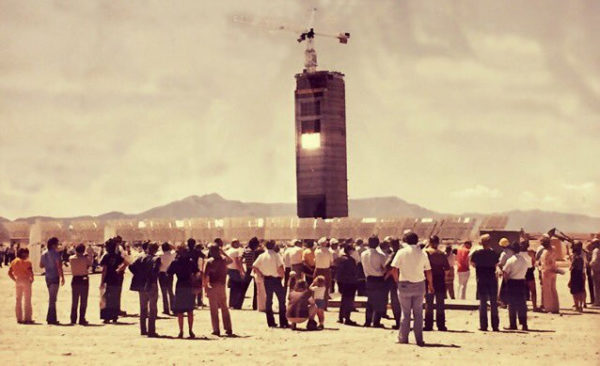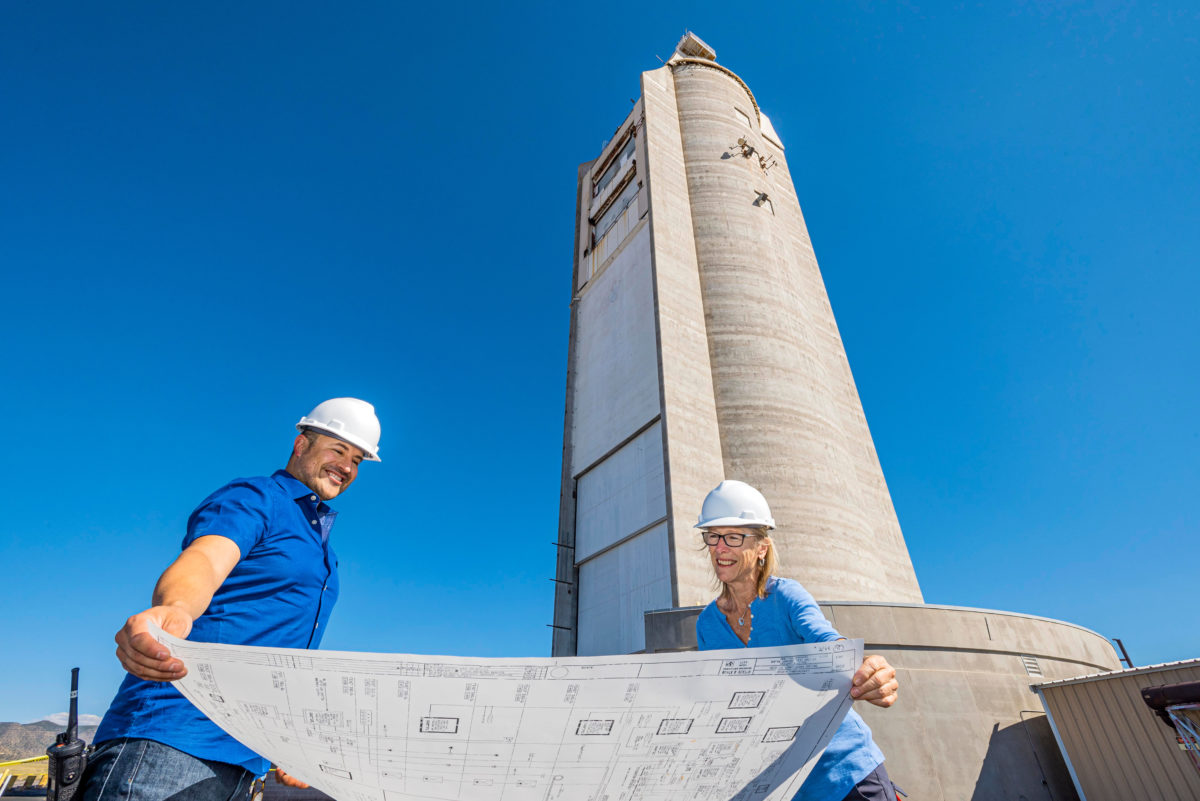The Energy Department’s Sandia National Laboratories has created a global archive of concentrated solar power (CSP) documents, which it is making fully accessible to the public.
Sandia has been studying utility-scale solar power since the 1960’s. Its National Solar Thermal Test facility was commissioned in 1978, spurred by the oil crisis of 1973. Documents detailing the design, construction, and research conducted at the multi-megawatt CSP facility had been shelved in backrooms and basements.
CSP uses large mirrors to concentrate sunlight onto a receiver tower to generate electricity. Sandia’s team has spent the last few years cataloging the history of the technology, organizing reports, blueprints, photos, among other items.
“A lot of ‘what if’ questions can be answered if you look at what was documented back in the day,” said Ken Armijo, project lead and CSP researcher at Sandia.
In addition to tens of thousands of Sandia documents, the lab sourced information from collaborators in Australia, South Africa, Germany, and the U.S. Department of Energy.
Armijo said that successful research projects are often shared widely in the research community through peer-reviewed papers, presentations, and reports, but unsuccessful projects are often be shared more quietly and reluctantly. The knowledge of failures can be lost when a researcher retires, which may lead to the repeat of mistakes by new researchers. The archive aims to serve to address these knowledge gaps.
Some of the projects in the archive include the Solar One, a Sandia-led 10 MW CSP project that delivered power to Barstow, California from 1982 to 1986. It was upgraded in 1995 to the Solar Two, which used a high-temperature molten-salt receiver to store heat and convert it to electricity after the sun set.

Image: Sandia National Laboratory
Now, the lab has received a $25 million award from the DOE to build a third-generation, particle-based CSP plant with expanded storage capacity. Documents from the archive could inform the construction of the plant.
The archive project is funded by the Department of Energy Solar Technologies Office and was kicked off by Chuck Andraka, a retired Sandia engineer. Sandia said it is interested in creating archives for other renewable energy technologies, as well.
This content is protected by copyright and may not be reused. If you want to cooperate with us and would like to reuse some of our content, please contact: editors@pv-magazine.com.









The info we need are the very successful CSP in North Africa and Spain, which make and store large amounts of solar heat. Many of the newest store all the day’s heat and use it for evening, night, duck curve power at higher prices. I see CSP directly producing and recycling metals and other clean high heat processes.